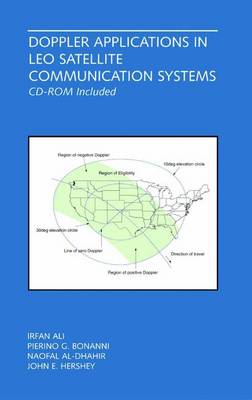The Springer International Series in Engineering and Computer Science
1 primary work
Book 656
This work develops and presents an important class of techniques useful in the construction of little Low Earth Orbit (LEO) satellite communication systems. It centres on the very significant Doppler shift that attends communications through a LEO satellite and shows how this phenomenon can be exploited for an unexpected benefit. The techniques taught in the book should be particularly attractive to system engineers because ground-based transceivers must generally compensate for the large Doppler component and therefore the necessary receiver processing loops are often already in place.; This volume starts with a recounting of the characteristics of a LEO satellite and its orbit. The second chapter addresses the LEO orbital geometry and reviews the Doppler effect attending LEO communications. Chapter three is focused on the important task of estimating the Doppler at a ground terminal. Appropriate signal processing algorithms are reviewed. Chapter four is concerned with predicting LEO satellite visibility.; Chapters five and six are, respectively, devoted to the use of the significant LEO Doppler as an aid in a new traffic flow control protocol and as an aid for effecting communications power control. The last chapter describes MATLAB-TM based analysis and demonstration CD-Rom software that accompanies the book.; The software is, first, a collection of functions useful for calculating satellite orbits, terrestrial contours and regions, and co-ordinate transformations based on Earth rotation. They are functions that have proven fundamental to the analysis of the traffic flow control protocol described in the book. Second, the software includes a set of user-friendly graphical animation routines that aid in visualization of a LEO orbit, its coverage regions, and the protocol.
